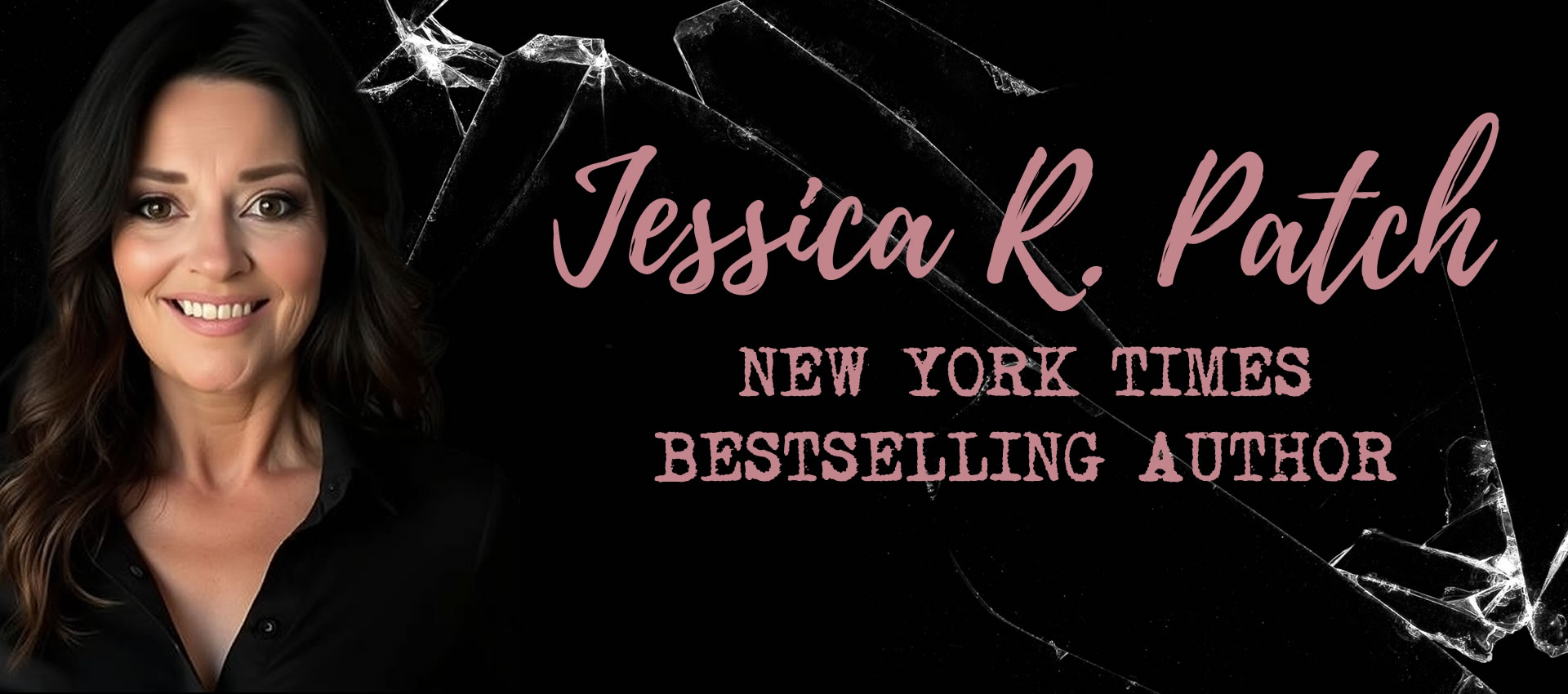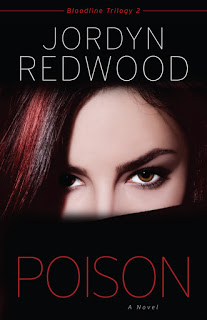I want to welcome one of my favorite authors to my blog today! Jordyn Redwood. Not only is she an amazing writer, but she’s a really sweet person. I had the chance to meet and chat with her at ACFW this past year. I gushed. I’m trying really hard not to right now.
Jordyn Redwood is a pediatric ER nurse by day, suspense
novelist by night. She hosts Redwood’s Medical Edge, a blog devoted to helping contemporary and historical
authors write medically accurate fiction. Her first two novels, Proof and Poison, garnered starred
reviews from Library Journal and
have been endorsed by the likes of Dr. Richard Mabry, Lynette Eason, and Mike
Dellosso to name a few. You can connect with Jordyn via her website at www.jordynredwood.net.
novelist by night. She hosts Redwood’s Medical Edge, a blog devoted to helping contemporary and historical
authors write medically accurate fiction. Her first two novels, Proof and Poison, garnered starred
reviews from Library Journal and
have been endorsed by the likes of Dr. Richard Mabry, Lynette Eason, and Mike
Dellosso to name a few. You can connect with Jordyn via her website at www.jordynredwood.net.
Thanks for coming, Jordyn, and take it away!
I like book titles with double meaning. My first published
book was titled, Proof.
There were two types of proof the heroine needed. Proof to convict her
assailant of his horrific crimes and proof of God in her life.
book was titled, Proof.
There were two types of proof the heroine needed. Proof to convict her
assailant of his horrific crimes and proof of God in her life.
Poison, the
second book in the Bloodline Trilogy, is releasing this month and in this
instance—there is an actual nefarious agent (not giving away too much) and a
side meaning as well.
second book in the Bloodline Trilogy, is releasing this month and in this
instance—there is an actual nefarious agent (not giving away too much) and a
side meaning as well.
What
poisons your life? Is it a bad relationship? Is it believing a
lie? Is it an actual toxin like drinking too much liquor, using illegal drugs
or prescription drugs in ways they weren’t intended?
poisons your life? Is it a bad relationship? Is it believing a
lie? Is it an actual toxin like drinking too much liquor, using illegal drugs
or prescription drugs in ways they weren’t intended?
Writing suspense, particularly with a heavy medical edge, I
think requires something unusual to be found. I’m a research hound. I love to
learn about new things. And for
think requires something unusual to be found. I’m a research hound. I love to
learn about new things. And for
Poison,
I read a lot on different types of toxins.
I read a lot on different types of toxins.
Aren’t toxins interesting? How minute substances can make a
person ill or end up killing? This is the stuff suspense novels are made from
and the lure for every author—finding that one poison—undetectable,
fast-acting, easily transmittable or ingested without the victim knowing.
person ill or end up killing? This is the stuff suspense novels are made from
and the lure for every author—finding that one poison—undetectable,
fast-acting, easily transmittable or ingested without the victim knowing.
I remember as a youngster hearing the story of how a
long-dead great uncle had passed. According to my grandfather, he’d served in
the military during WWI and had died as the result of complications from
mustard gas exposure.
long-dead great uncle had passed. According to my grandfather, he’d served in
the military during WWI and had died as the result of complications from
mustard gas exposure.
So lately, in thinking about toxins, I began to wonder what
exactly mustard gas was and how did it kill.
exactly mustard gas was and how did it kill.
Interestingly, I discovered that term “gas” can mean more than just a vaporous substance and can be any
chemical substance.
chemical substance.
Lethal
Gases: Lead
to disablement or death.
Gases: Lead
to disablement or death.
Harassing
agents:
Disrupt enemy soldiers.
agents:
Disrupt enemy soldiers.
Accidental
Gases: Gases
encountered during war that are not related to a chemical agent like excessive
gases from gunpowder during a fight.
Gases: Gases
encountered during war that are not related to a chemical agent like excessive
gases from gunpowder during a fight.
Mustard gas falls into the first group—lethal gases. Tear
gas, for instance, would fall into the second category.
gas, for instance, would fall into the second category.
But how does mustard gas kill?
Mustard
gas is also called sulfur mustard and
its name is derived from its foggy yellow appearance and mustard like smell. It’s a
blistering agent/alkylating agent and comes in many forms: vapor, liquid or
solid. When a person comes into contact with the agent, it damages the skin and
mucous membranes inside. The chemical liquefies tissue.
gas is also called sulfur mustard and
its name is derived from its foggy yellow appearance and mustard like smell. It’s a
blistering agent/alkylating agent and comes in many forms: vapor, liquid or
solid. When a person comes into contact with the agent, it damages the skin and
mucous membranes inside. The chemical liquefies tissue.
Since it freezes at a high temperature, it’s not very
effective when it’s cold. It doesn’t spread easily and would fall to the ground
before soldiers could be exposed. This property also made it a good weapon
because it could stay low on the ground for weeks depending on the temperature
and expose unsuspecting troops going into the area. Another factor that made it
a good weapon—people adjusted to the smell quickly.
effective when it’s cold. It doesn’t spread easily and would fall to the ground
before soldiers could be exposed. This property also made it a good weapon
because it could stay low on the ground for weeks depending on the temperature
and expose unsuspecting troops going into the area. Another factor that made it
a good weapon—people adjusted to the smell quickly.
Mustard gas was used first by the Germans in 1917 and was
born out of the trench warfare era where new military strategies had to be
devised to get men out of their bunkers. The agent was fitted onto artillery
shells which were then shot to toward the enemy lines without the accompanying
explosion which I’m sure seemed strange to the soldiers at the time.
born out of the trench warfare era where new military strategies had to be
devised to get men out of their bunkers. The agent was fitted onto artillery
shells which were then shot to toward the enemy lines without the accompanying
explosion which I’m sure seemed strange to the soldiers at the time.
Hey, why didn’t that thing blow up? What exactly is that
yellow fog?
yellow fog?
Unfortunately, mustard gas doesn’t often kill expediently.
The first symptom was generally red blisters to the skin that developed within 2-24
hours. If the gas was inhaled, these blisters would slowly develop and seal off
the airway.
The first symptom was generally red blisters to the skin that developed within 2-24
hours. If the gas was inhaled, these blisters would slowly develop and seal off
the airway.
Other symptoms:
- Eyes: Irritation, redness, burning, inflammation and even
blindness - Skin: Itchy redness that is replaced
with yellow blisters
- Respiratory system: Runny or bloody
nose, sneezing, hoarse throat, shortness of breath, coughing, sinus pain
- Digestive system: abdominal pain, diarrhea, fever, nausea and
vomiting
It was possible for the body to heal if there was a short,
brief encounter. Longer, more frequent exposures proved to be more deadly.
brief encounter. Longer, more frequent exposures proved to be more deadly.
By the end of WWI, chemical agents inured 1 million soldiers
and civilians and killed 100,000 people.
and civilians and killed 100,000 people.
Likely, mustard gas wouldn’t be considered favorable to use
in chemical warfare these days because of its prolonged activity.
in chemical warfare these days because of its prolonged activity.
This link goes to a very
powerful article on mustard gas and its effects and was used heavily in the
writing of this piece—the italicized areas are from the article. It is
definitely worth the read.
powerful article on mustard gas and its effects and was used heavily in the
writing of this piece—the italicized areas are from the article. It is
definitely worth the read.
What
about you? What interesting things have you researched that have ended up in a
novel?
about you? What interesting things have you researched that have ended up in a
novel?
I’d
(Jess) like to know, if you’re a reader, what interesting thing have you read
about in a novel that was used by the villain?
(Jess) like to know, if you’re a reader, what interesting thing have you read
about in a novel that was used by the villain?
Here’s a peek at Poison!
Poison synopsis: Five years ago, Keelyn
Blake’s armed, mentally ill stepfather took her family hostage in their house
in rural Colorado. She and her half-sister Raven made it out alive, but others
did not. Authorities blamed the father’s frequent hallucinations about a being
named Lucent, but in the end, even the best of the FBI’s hostage negotiators
failed to overcome the man’s delusions and end the standoff peacefully.
Blake’s armed, mentally ill stepfather took her family hostage in their house
in rural Colorado. She and her half-sister Raven made it out alive, but others
did not. Authorities blamed the father’s frequent hallucinations about a being
named Lucent, but in the end, even the best of the FBI’s hostage negotiators
failed to overcome the man’s delusions and end the standoff peacefully.
Now,
Lucent is back, and he’s no hallucination. In fact, he is a very real person
with dangerous motives. He has kidnapped Raven’s daughter, and–Keelyn
worries–maybe has hurt Raven as well. Though she is estranged from her sister,
Keelyn feels the immediate need to find Raven and save what family she has
left. But when others who were involved in that fateful day start dying, some
by mysterious circumstances, Keelyn wonders if she can emerge unscathed a
second time.
Lucent is back, and he’s no hallucination. In fact, he is a very real person
with dangerous motives. He has kidnapped Raven’s daughter, and–Keelyn
worries–maybe has hurt Raven as well. Though she is estranged from her sister,
Keelyn feels the immediate need to find Raven and save what family she has
left. But when others who were involved in that fateful day start dying, some
by mysterious circumstances, Keelyn wonders if she can emerge unscathed a
second time.
You tube video link for Poison book trailer: http://youtu.be/slsX8j_Q_Ic
Link to the first five chapters of Poison: http://www.jordynredwood.net/resources/



OH! I've been waiting for this to come out –cannot wait to read it. LOVED the twists and turns in Proof:)
Jess, thanks for hosting Jordyn! Jordyn, your knowledge and love of researching intricate medical issues just blows my mind. Your blog provides an incredible resource to anyone needing accurate information to incorporate into their writing/books. Congrats on your release of POISON! Hugs!
Thanks Susan and Donna– so glad to see you here!
Just bopped in here and really enjoyed this post! Mustard gas…agh! Hm. Unusual deaths. I will say I just read a book in which someone was shoved in fresh cement/asphalt while no one was around. That scene will definitely stick with me for awhile. AGH. But mustard gas definitely sounds awful, too.